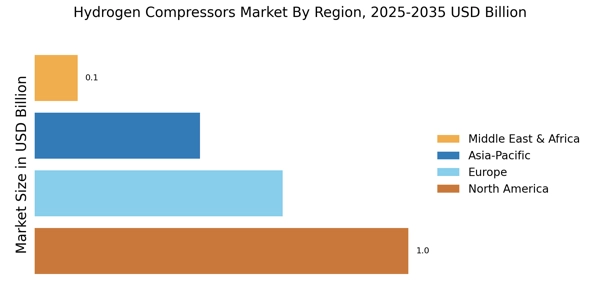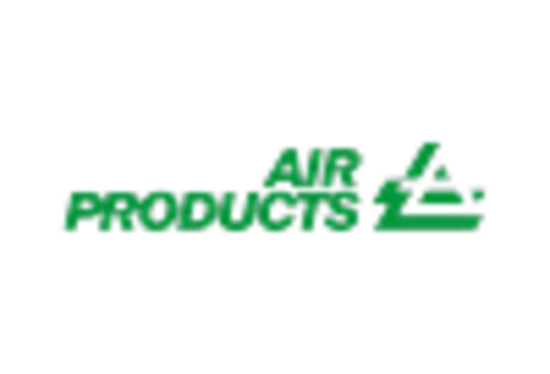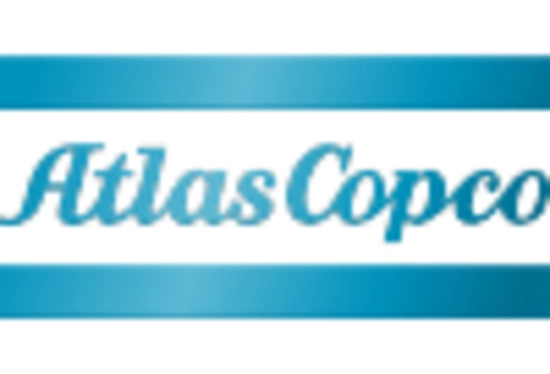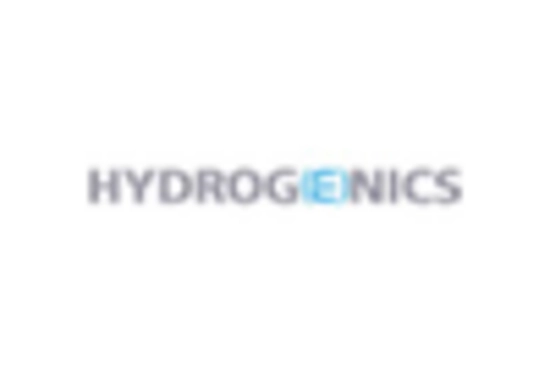Expanding Industrial Applications
The expanding industrial applications of hydrogen are driving the Hydrogen Compressors Market. Industries such as petrochemicals, refining, and metal processing are increasingly utilizing hydrogen for various processes, including hydrogenation and as a reducing agent. The demand for hydrogen in these sectors is projected to grow, with the hydrogen market expected to reach USD 200 billion by 2025. This surge in industrial usage necessitates efficient and reliable hydrogen compression solutions to ensure optimal performance and safety. As industries seek to enhance their operational efficiency and reduce emissions, the Hydrogen Compressors Market is likely to benefit from this trend.
Government Initiatives and Funding
Government initiatives and funding play a crucial role in propelling the Hydrogen Compressors Market. Many governments are implementing policies and providing financial incentives to promote hydrogen as a clean energy source. For example, various countries have established hydrogen roadmaps that outline strategic investments in hydrogen infrastructure, including compression technologies. The European Union has allocated significant funding for hydrogen projects, aiming to create a robust hydrogen economy. Such support not only fosters innovation but also encourages private sector participation, leading to increased demand for hydrogen compressors. As these initiatives gain momentum, the Hydrogen Compressors Market is poised for accelerated growth.
Rising Demand for Clean Energy Solutions
The increasing The Hydrogen Compressors Industry. As nations strive to reduce carbon emissions and transition to sustainable energy sources, hydrogen emerges as a viable alternative. The International Energy Agency projects that hydrogen demand could reach 500 million tons by 2050, significantly boosting the need for efficient hydrogen compression technologies. This shift towards hydrogen as a clean fuel for transportation, industrial applications, and energy storage necessitates advanced compressors that can handle high pressures and varying flow rates. Consequently, the Hydrogen Compressors Market is likely to experience substantial growth as industries adopt hydrogen solutions to meet environmental regulations and consumer expectations.
Growing Investment in Hydrogen Infrastructure
Growing investment in hydrogen infrastructure is a significant driver for the Hydrogen Compressors Market. As countries and companies recognize the potential of hydrogen as a clean energy carrier, substantial investments are being made in hydrogen production, storage, and distribution systems. The establishment of hydrogen refueling stations and storage facilities requires advanced compression technologies to ensure safe and efficient operations. According to recent estimates, investments in hydrogen infrastructure could exceed USD 300 billion by 2030. This influx of capital is expected to stimulate demand for hydrogen compressors, thereby propelling the Hydrogen Compressors Market forward.
Technological Innovations in Compression Technologies
Technological advancements in compression technologies are reshaping the Hydrogen Compressors Market. Innovations such as advanced materials, improved efficiency, and enhanced safety features are driving the development of next-generation hydrogen compressors. For instance, the introduction of composite materials allows for lighter and more durable compressor designs, which can operate at higher pressures. Furthermore, the integration of smart technologies, such as IoT and AI, enables real-time monitoring and predictive maintenance, enhancing operational efficiency. As these technologies evolve, they are expected to lower operational costs and improve the reliability of hydrogen compression systems, thereby attracting more investments into the Hydrogen Compressors Market.


















Leave a Comment